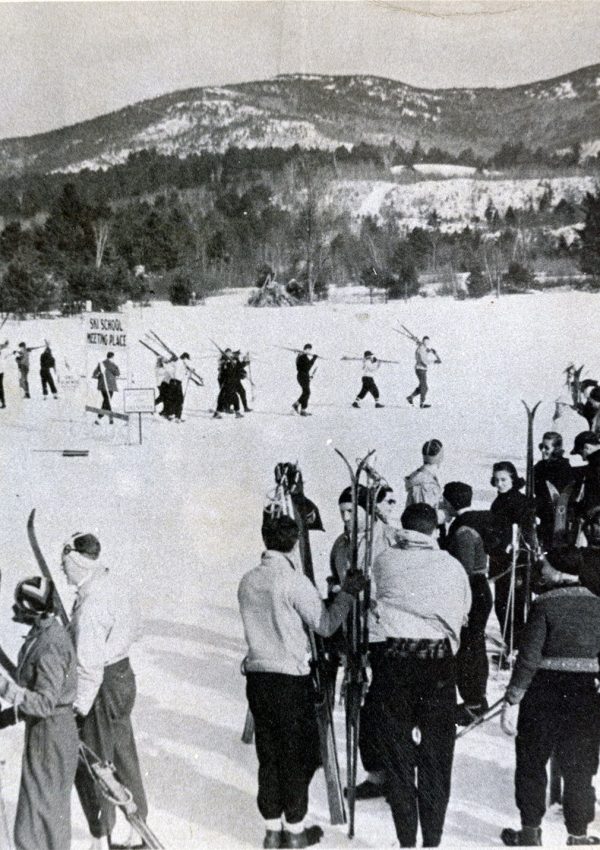
In 1937, Harvey Dow Gibson, a native of North Conway and a prominent financier from New York, set out to transform his hometown into a premier skiing destination. At a time when New England ski areas featured narrow, twisting trails, Gibson envisioned wide expanses of open terrain reminiscent of Austria's alpine landscapes. With a grant of $15,000 from the Works Progress Administration (equivalent to about $323,539.36 today) and support from the town of Conway, he successfully cleared approximately 200 acres of slopes. Originally known as Lookout Mountain, the area was renamed Cranmore Mountain once Gibson developed it, solidifying its identity as a top ski destination in North Conway.
The resort operated its first winter season with a single rope tow.
Picture from opening day.
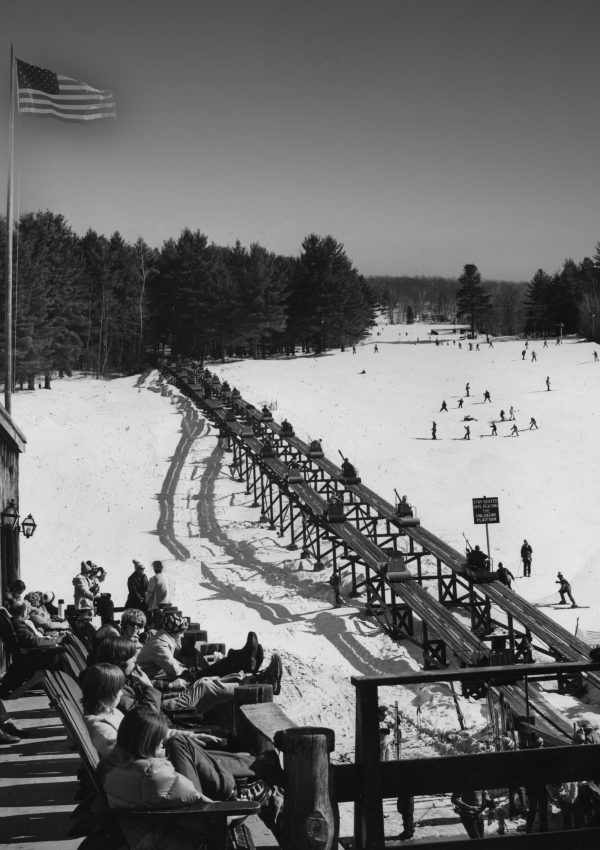
The ski world was introduced to a new form of uphill transportation when Gibson hired a local mechanic, George Morton to invent a new ski lift, the Skimobile. Morton’s lift featured 60 cars that ascended a wooden trestle, pulled by a cable under the track. The first Skimobile trestle ascended Cranmore to the halfway point, and its popularity in its first season led to the construction in the summer of 1939 of an upper trestle that reached the summit of the mountain. The Skimobile would carry as many as 122,000 passengers a season until its removal in 1990.
Pictured below, the Skimobile, as seen from Cranmore’s deck in 1953. Cranmore’s sunny exposure has always made it a favorite for sun worshippers, hence the popularity of the phrase “Tan More at Cranmore.” Courtesy of Dick Smith.
Pictured below, mechanical engineer George Morton of Bartlett was the designer of the unique Skimobile that Gibson financed at Mount Cranmore. Courtesy of the Gibson/Woodbury Charitable Foundation.
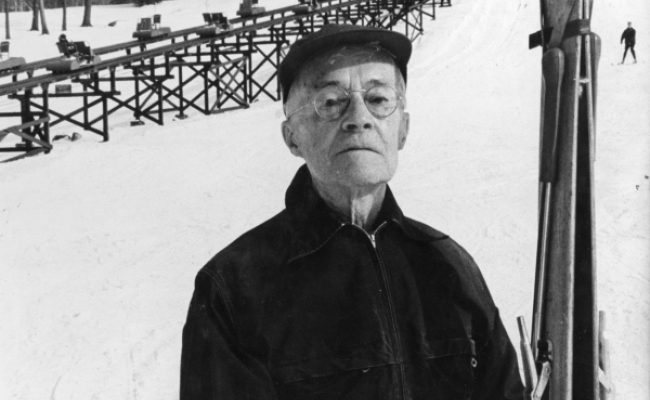
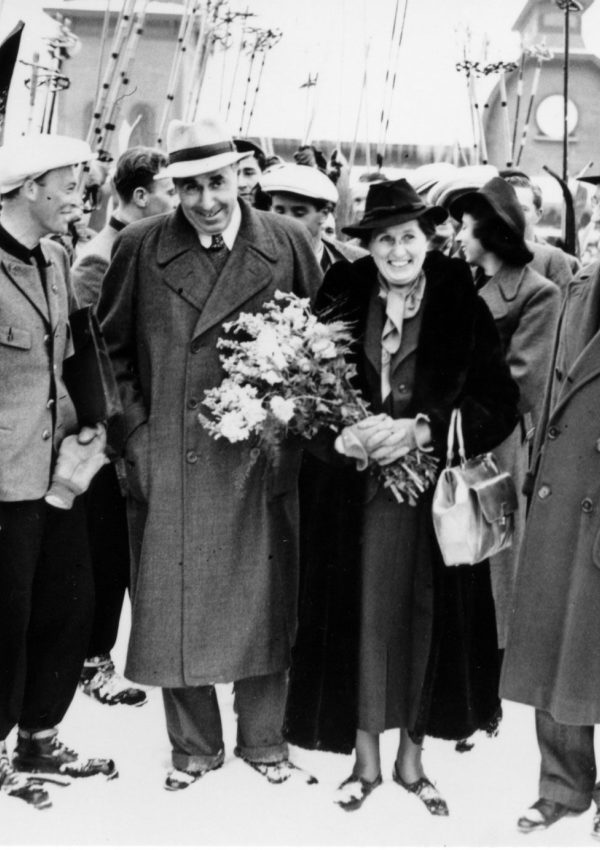
Austrian ski pioneer Hannes Schneider relocated to Cranmore, where he established the resort's first official ski school and introduced European skiing techniques to the region. Originally from St. Anton, Schneider founded the Kandahar Ski Club in 1928. His dynamic personality, along with his appearances in Arnold Fanck films and participation in the Arlberg-Kandahar race, made him a prominent figure in the skiing world.
During the Nazi occupation of Austria in 1938, Schneider was imprisoned, and his ski shop and guesthouse in St. Anton were vandalized. Harvey Dow Gibson appealed to the German government for his release, and in early 1939, Schneider and his family arrived in North Conway to a warm and festive welcome.
Under Schneider's leadership, Cranmore's ski school evolved into one of the most prestigious programs in skiing. Although he traveled to consult at other resorts and train the 10th Mountain Division, North Conway remained his beloved home.
Photo courtesy of North Conway Public Library.
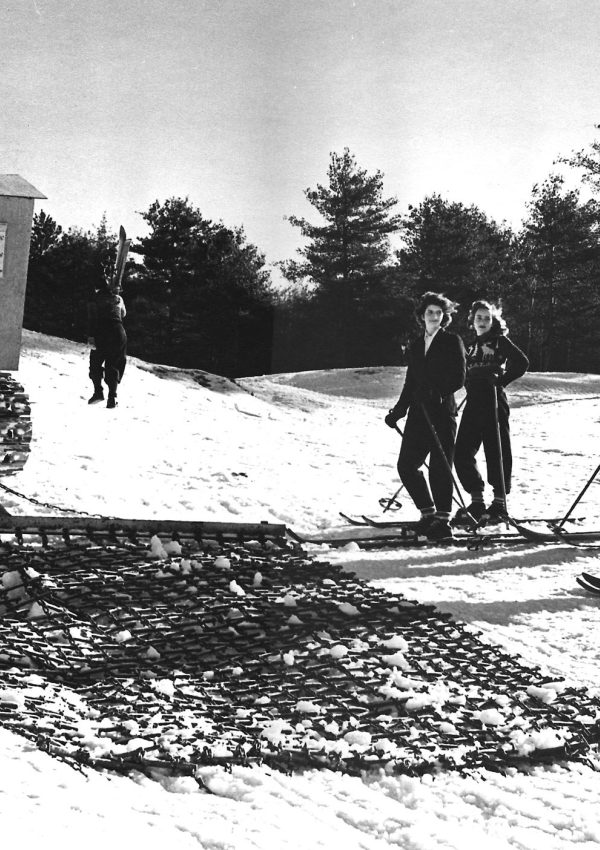
Cranmore became the first ski resort to develop a snow grooming program with a chain-link mat weighing 1,200 pounds. The ski-mounted road grader dragged by a Tucker Sno-cat was coined the “Magic Carpet.” The ice caulks welded underneath the mat, originally made for horseshoes, break up crusts resulting from rain or sun. Several forms of rollers were also used, and calcium chloride was applied to the ledges to thaw and refreeze snow so it stuck to the underlying rock.
Photo courtesy of North Conway Public Library.
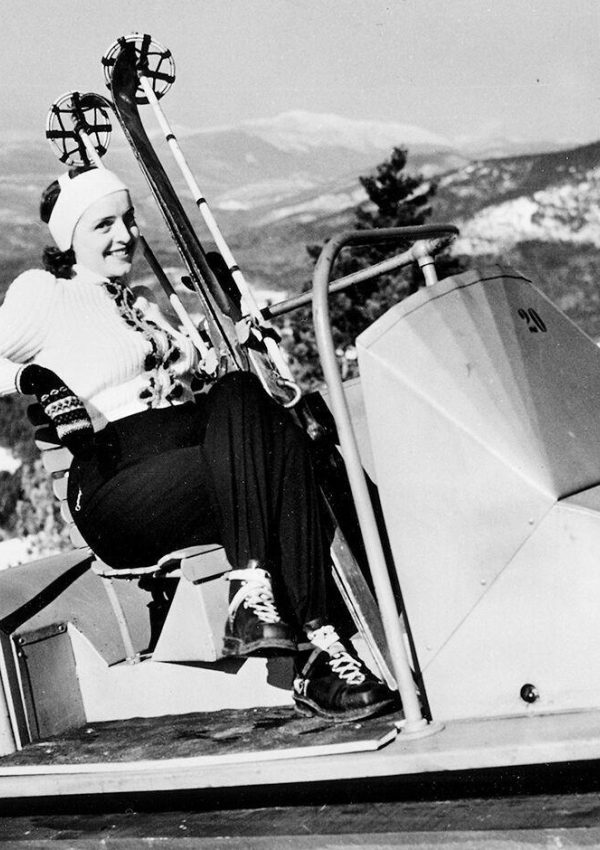
“Miss Skimobile”
Connie Davis Watson rides the Skimobile at Mount Cranmore. Connie Davis Watson was a longtime member of the Mount Washington Valley and was the first female president of the North Conway Chamber of Commerce. She was also a model, artist, and a devoted ski instructor in the Eastern Slope Ski Club Junior Program.
Photo courtesy of North Conway Public Library.
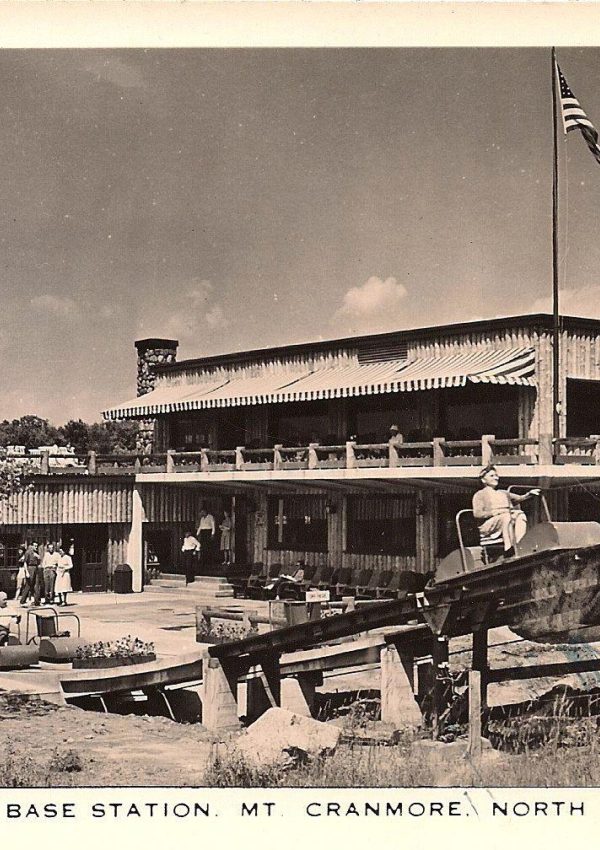
The Cornerstone of 1945 improvements was a new base station, which includes a base platform, a second floor restaurant, and expanded ski shop. The lower Skimobile track was also replaced. By 1946, Gibson had invested $1M in the snow train destination.
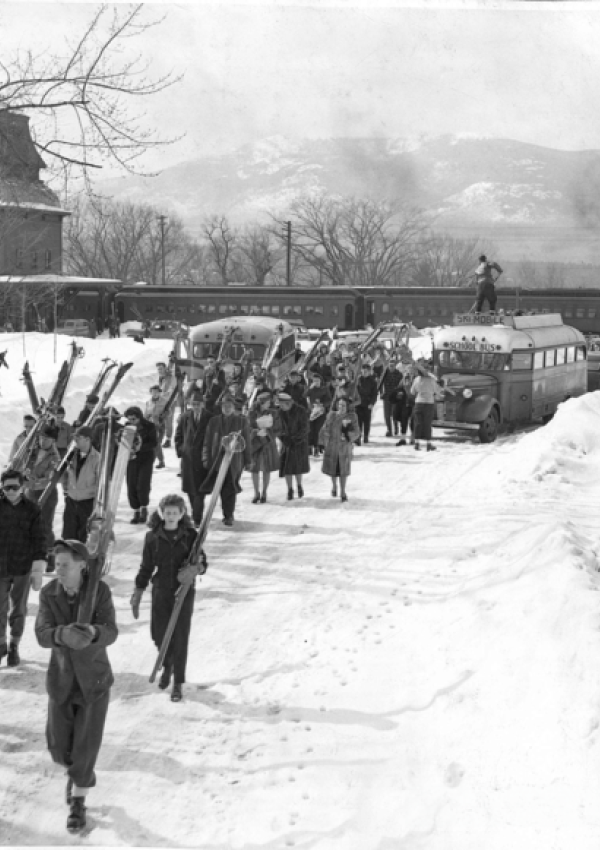
When Cranmore Mountain opened for the 1937-38 ski season, snow trains played a pivotal role in bringing skiers from Boston to its slopes. By the early 1940s, during the height of World War II, as many as five trains would arrive in North Conway on a Sunday, carrying up to 4,000 skiers eager for a one-day adventure on the snow-covered trails.
Snow trains became a defining feature of winter in New England, first beginning service to New Hampshire in 1931. Operating from early December through mid-March, these trains departed from major cities such as New York City, New Haven, Boston, and Portland. Their destinations included popular skiing spots like the Berkshires in Western Massachusetts, Laconia, Plymouth, Whitefield, Ossipee, North Conway, and Intervale.
The Boston and Maine Railroad operated the first official snow train in 1931, traveling from Boston to Warner, New Hampshire. By 1932, snow trains were already bringing skiers directly to North Conway, solidifying the town’s reputation as a premier ski destination. During World War II, when gas rationing made driving impractical, Cranmore’s convenient train access allowed the resort to flourish, as skiers could easily arrive by rail and walk straight to the mountain.
Snow trains remain an iconic part of New England’s ski history, a nostalgic reminder of a time when rail travel was an integral part of the winter sports experience.
Courtesy of Dwight Smith.
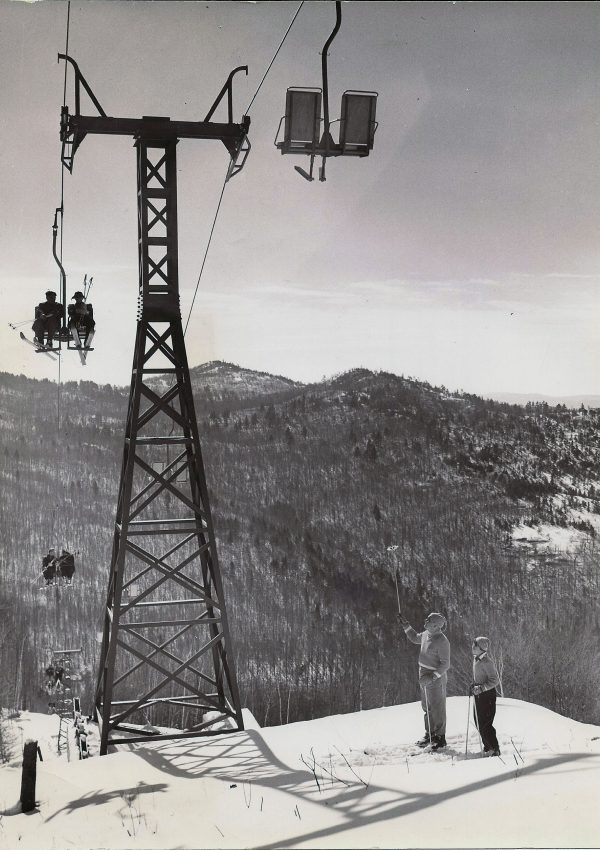
The construction of the Roebling double chairlift at Cranmore Mountain Resort significantly enhanced access to the East Bowl area, known for its diverse terrain and excellent skiing conditions. This new lift allowed skiers to enjoy quicker ascents, reducing wait times and maximizing time on the slopes. By opening up a variety of trails for different skill levels, the double chairlift improved the overall skiing experience and reflected Cranmore's commitment to modernization and guest satisfaction. Its installation marked an important step in establishing Cranmore as a premier skiing destination in New Hampshire.
In 1970, Cranmore Mountain Resort significantly enhanced its skiing experience by installing a $250,000 snowmaking system covering 44 acres. This investment allowed the resort to create and maintain optimal snow conditions, helping to prevent lack-of-snow closures and ensuring well-covered trails even during unpredictable weather. The ability to produce artificial snow extended the skiing season, enabling earlier openings and later closings, which attracted more visitors.
Snowmaking was expanded to the summit in 1985.
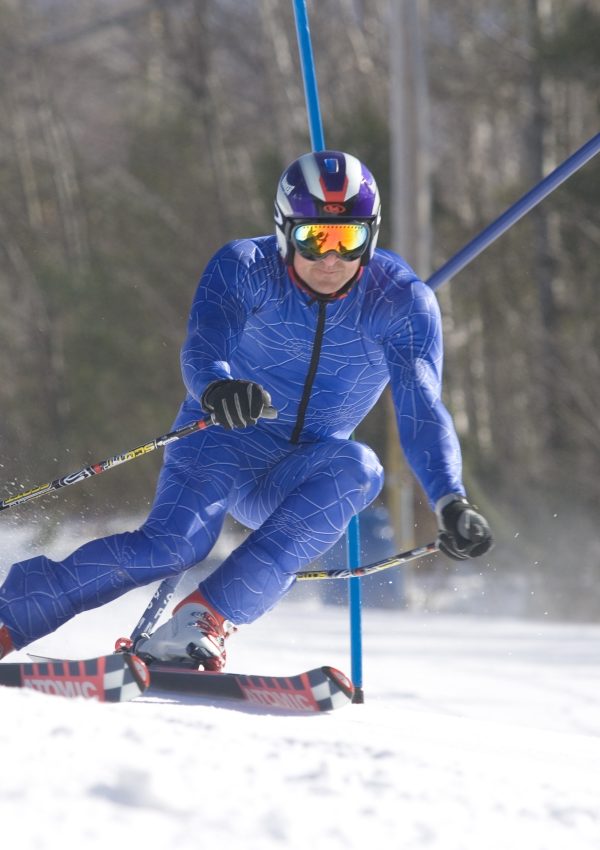
The Mountain Meister Race series begins at Local Yokel. Mountain Meisters is the longest-running weekly recreational ski racing program in the United States. This 10-week season attracts racers with varying skill levels who gather on Wednesdays to compete on the racecourse. While some participants engage in fierce competition, others simply enjoy reconnecting with friends and taking a few turns on the slopes. To this day, Meisters fosters a strong sense of community and camaraderie among its participants.
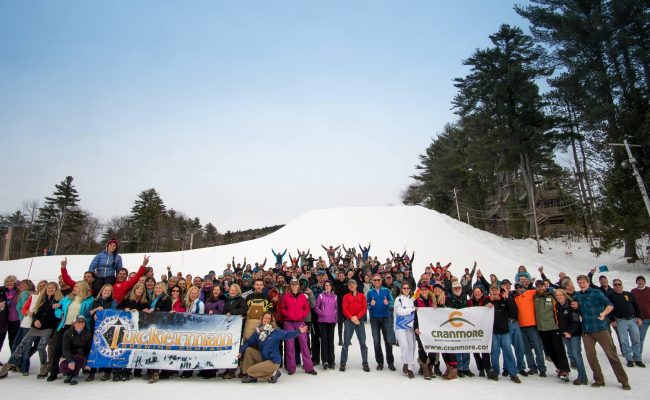
Cranmore is the only ski area in the Mount Washington Valley to open that season, due in large part to the recently installed snowmaking systems.
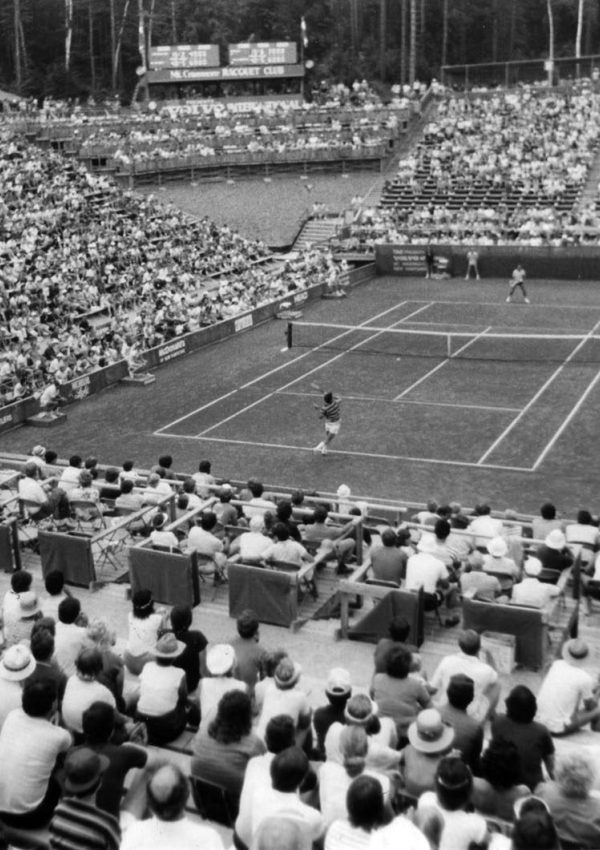
Marilyn Miller becomes Cranmore’s first women General Manager. During this season a $3M expansion was completed that included significant snowmaking upgrades, six new trails, a new base lodge, and a new triple chairlift to the summit.
During the 1987-88 season, another $1M was invested including a new double chairlift on the South Slope, increased snowmaking, and base area improvements, that coincided with a slopeside condominium development on the north side of the mountain.
Top to bottom night skiing was added. Five trails off the summit were lit, as well as the South Slope.
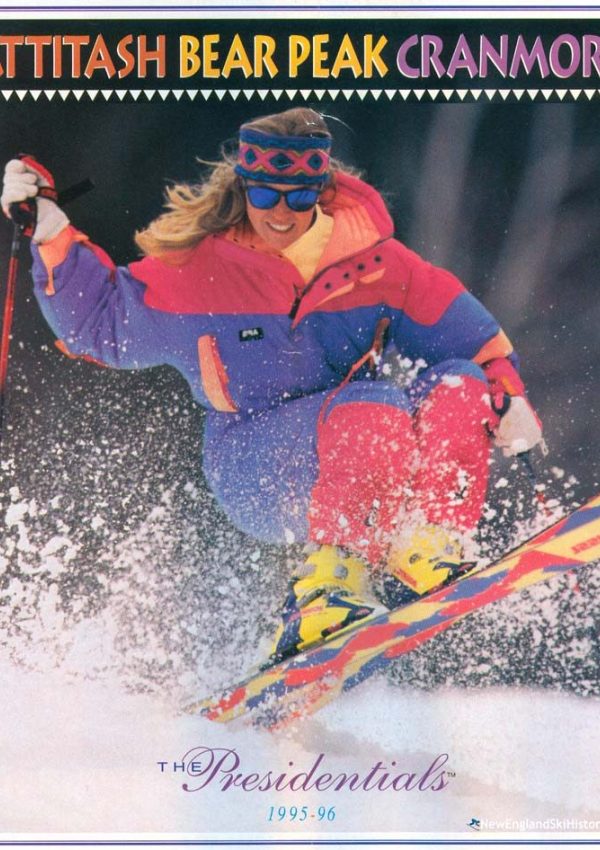
Cranmore was purchased by Les Otten’s LBO Resort Enterprises Corp., which installed a Doppelmayer high-speed detachable quad lift to the summit. The resort was co-marketed alongside another of Otten’s recent acquisitions, Attitash Bear Peak.
Courtesy of NewEnglandSkiHistory.com.
Cranmore was sold to Booth Creek Ski Holdings. Cranmore added lift serviced mountain biking and snow tubing to its operation, along with a lighted half pipe and terrain park.
Booth Creek would own and operate Cranmore through the 2009-2010 season.
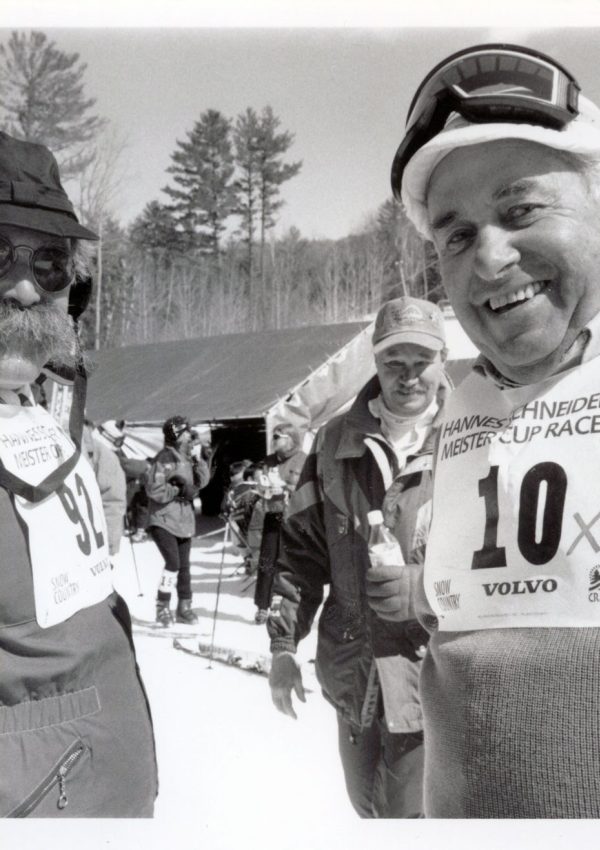
First Hannes Schneider Meister Cup Race to raise money for the New England Ski Museum. The “Meister Cup” has become one of Cranmore’s most celebrated spring events.
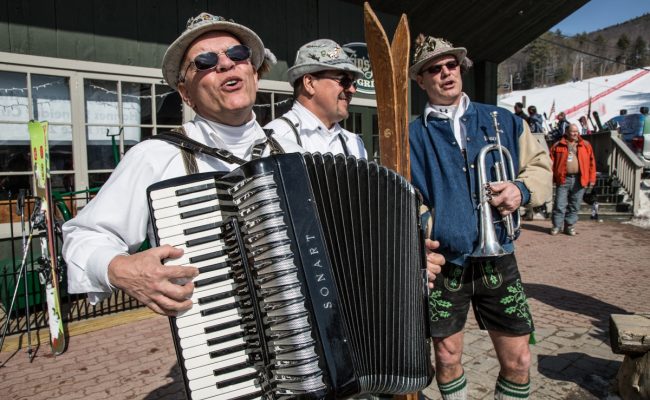
The first Climb Against Cancer takes place at Cranmore as a fundraiser for Jennifer Hill’s expenses while fighting cancer. The group of UNH Alumni that organized the event would later form Jen’s Friends Cancer Foundation.
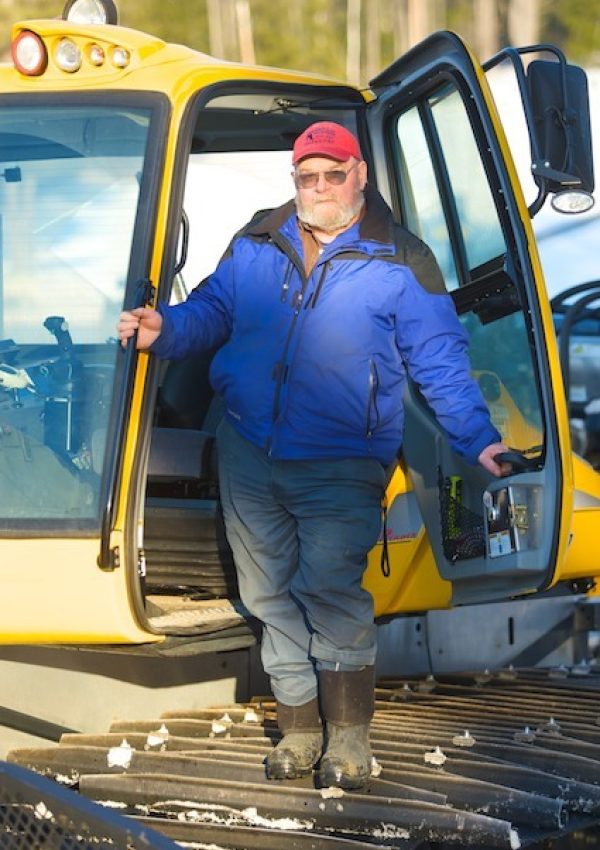
Longtime Cranmore staffer, the late Jimmy Mersereau, was selected to be one of the groomers during the 2002 Salt Lake Winter Olympics.
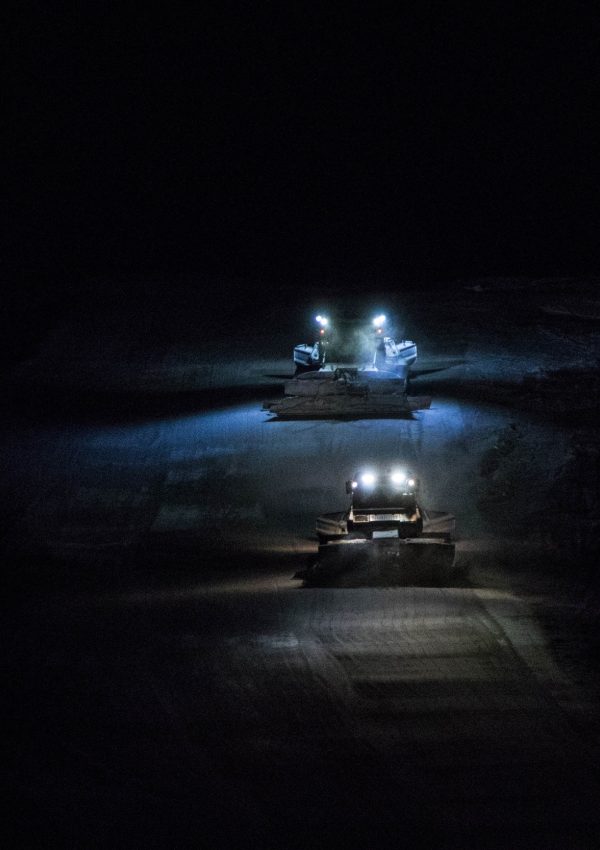
Cranmore makes headlines when it became the first ski area east of the Mississippi to run its grooming equipment and other diesel vehicles on biodiesel.
Bretton Woods Marketing Director Ben Wilcox was named Cranmore General Manager in June 2004.
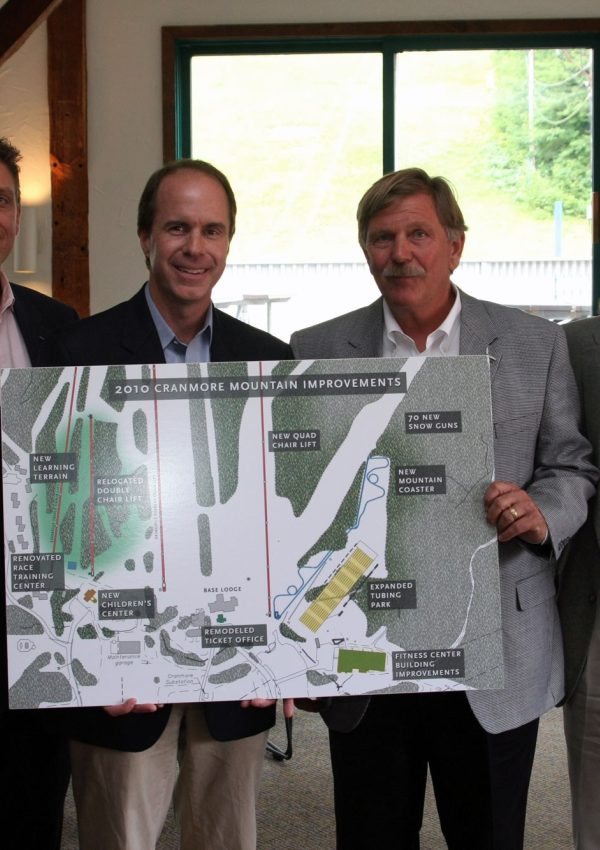
Cranmore purchased by Brian Fairbank, Tyler Fairbank and Joseph O'Donnell. One of their first acts as owners was to commit to investing $60M in resort improvements over the first 10 years.
Early improvements included the expansion of snowmaking, the expansion of the Tubing Park to 10 lanes, a state-of-the-art Children’s Center and the retrofitting of the resort’s chairlifts; which included a new $1M triple chair upgrade, replacing the old East Double Chair, a new Doppelmayr fixed-grip quad, doubling the capacity from the old south double. The old lift was relocated to the learning area outside of the new Arlberg Children’s Center.
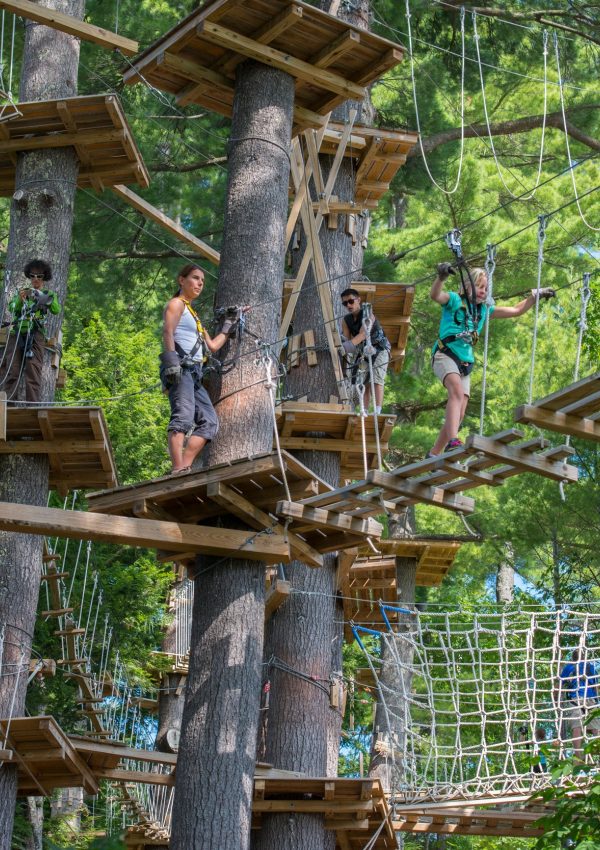
Cranmore begins summer operations with the introduction of the Mountain Adventure Park and Aerial Adventure Ropes Course. The Mountain Adventure Park included NH’s first Mountain Coaster.
The East Chair is removed and replaced with a Doppelmayr Triple Chairlift.
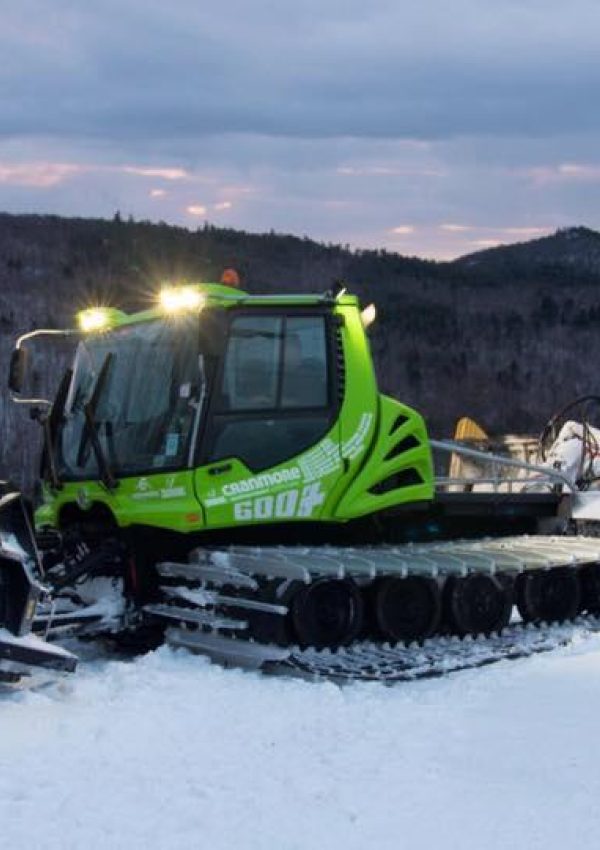
- Cranmore breaks ground on the first phase of their $85M base area redevelopment, Kearsarge Brook Condominiums at Cranmore.
- Cranmore was among the first resorts east of the Mississippi and the first in New England to add an electric diesel snow cat, a PistenBully 600E+, to their grooming fleet.
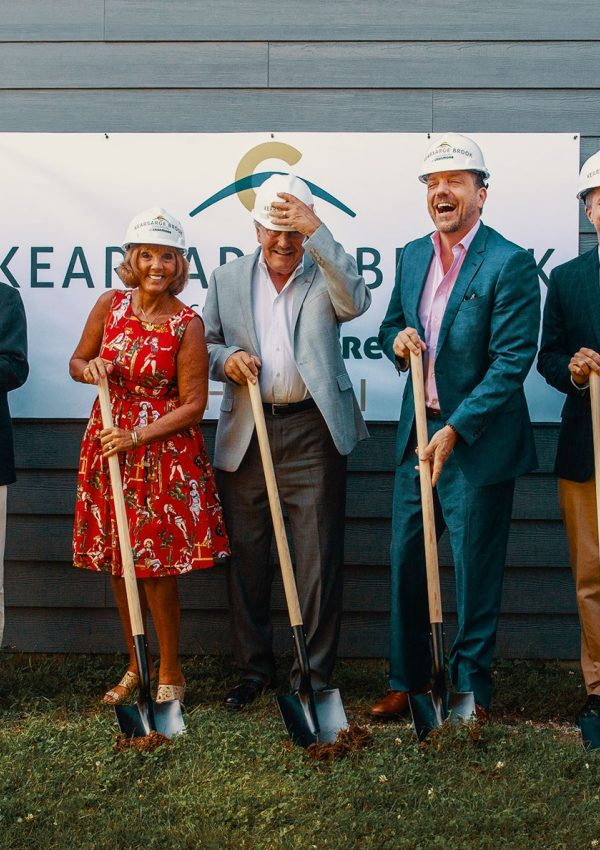
Construction begins on Phase II of Kearsarge Brook Condominiums at Cranmore. This completed in 2020.
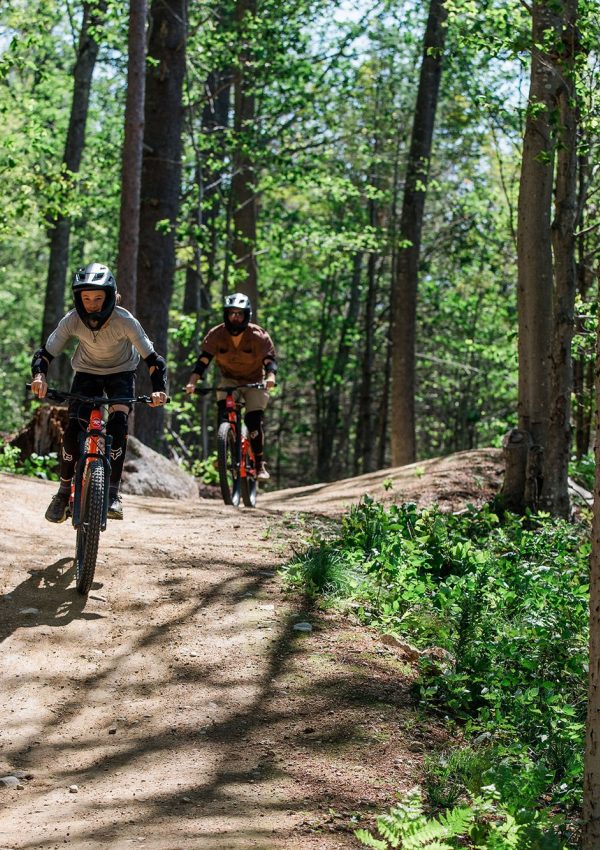
Cranmore expands summer operations with the opening of the new Cranmore Bike Park. The Cranmore Bike Park offers lift serviced downhill mountain biking with a mix of machine-built flow trails and technical single track terrain.
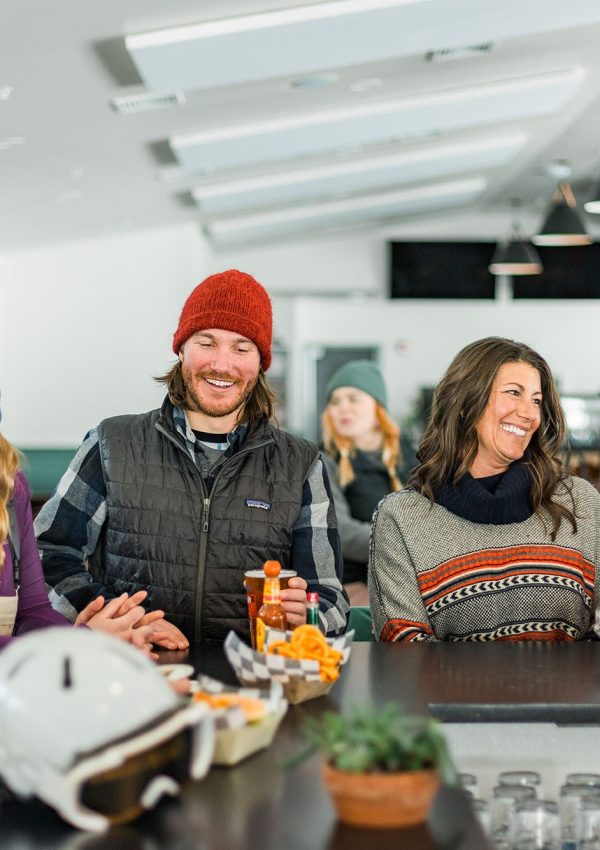
- Cranmore’s new Artist Falls Lodge opens to the public, featuring ticketing area for the tubing and winter and summer mountain adventure park, Alpine Café and Bar and access to Kearsarge Brook owner amenities including a fitness room and four-season outdoor pool and spa.
- Cranmore breaks ground on Fairbank Lodge.
- Skimobile Express Quad undergoes a $1M, full-system modernization.
- Cranmore’s downhill bike park expands with the addition of three new trails.
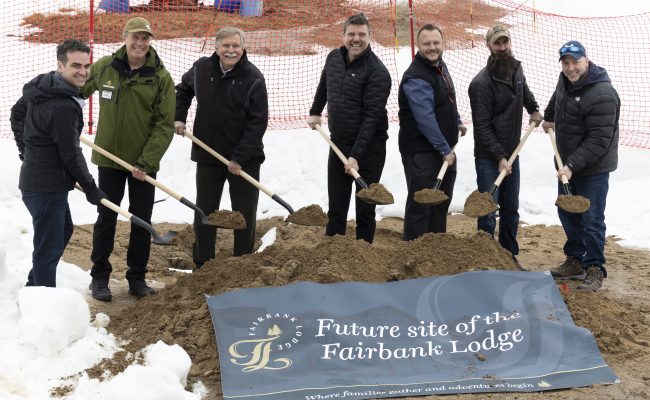
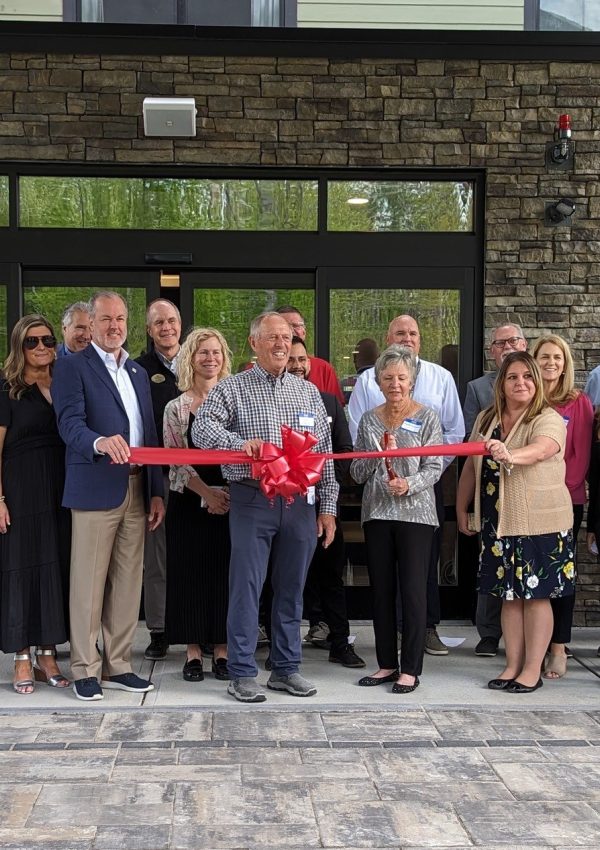
- Cranmore launches Phase IV of their Master Plan, the Lookout, a name chosen to pay tribute to the original name of the mountain.
- Lafrance Hospitality opens an 89 room Fairfield Inn & Suites by Marriott North Conway at the base of Cranmore Mountain.
- The Mount Washington Valley Rec Path opens to the public. The 2.9-mile paved community path connects Cranmore to Settlers Green, and was designed for people to utilize an environmentally friendly transportation route.
- Fairbank Lodge is set for completion for the 23/24 winter season. Fairbank Lodge amenities include a state-of-the-art food pavilion, slopeside bar, 5,000sqft slopeside patio, day lodge space and private and day storage locker rooms.
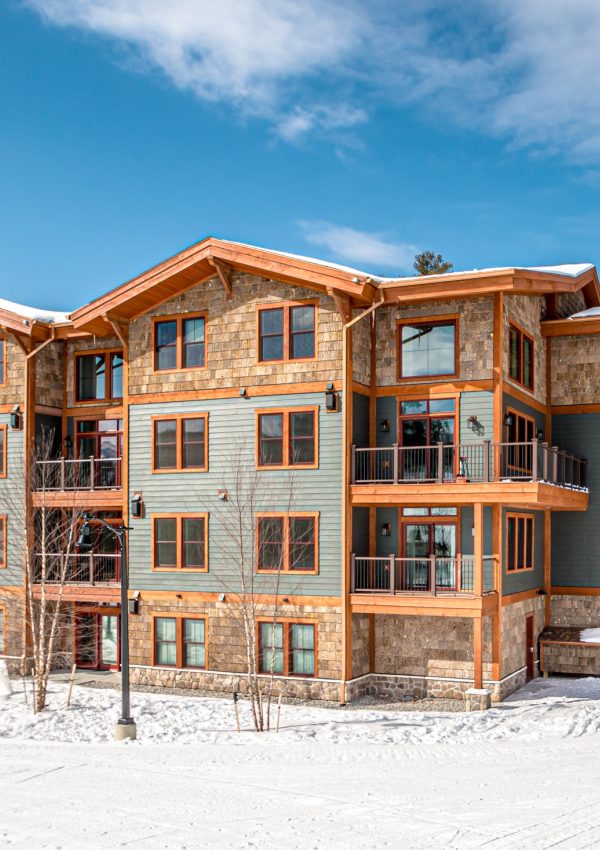
The Lookout is completed, adding an additional 17 residences and a state of the art first aid facility for ski patrol.
Phase V set to be complete, and includes an additional 21 residences, a new state of the art rental shop, and full retail shop.
Phase VI of Cranmore’s Master Plan is set to be complete. This phase of the Fairbank Lodge includes a new restaurant, ski and snowboard school and 12 residences, and will complete Cranmore's $85M base area redevelopment project. In total, this project will double the size of the area’s day-visit facilities and house 98 condominium residences to the resort.
